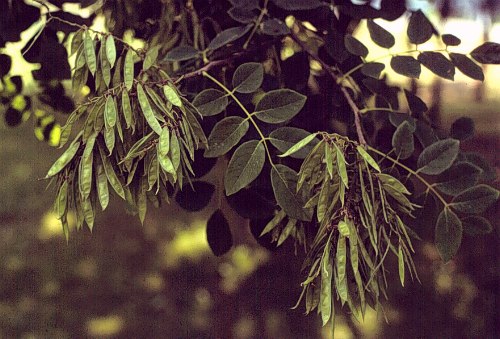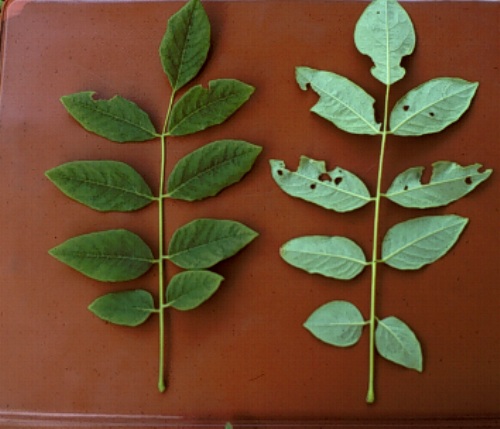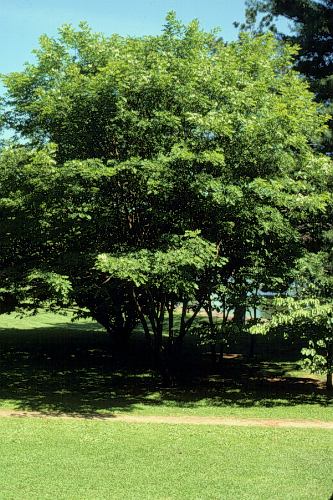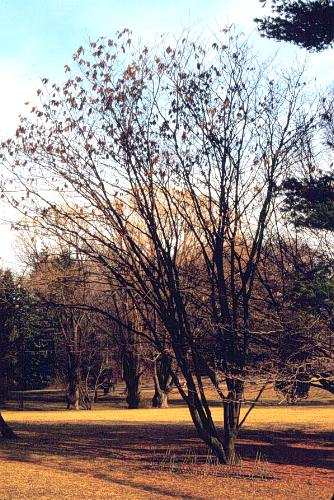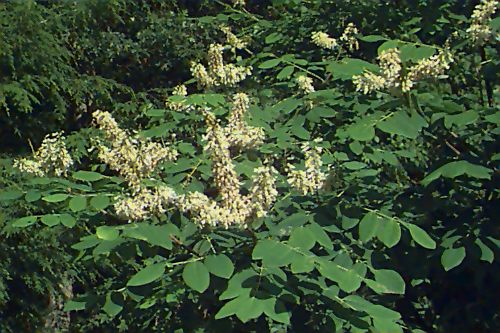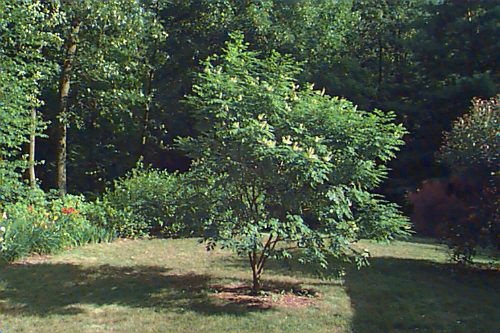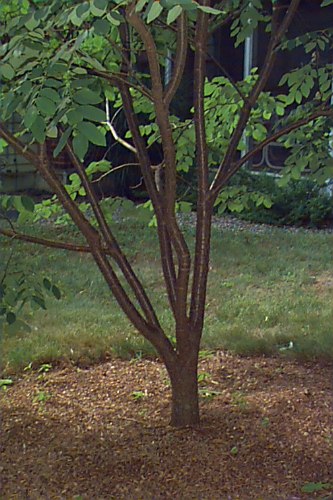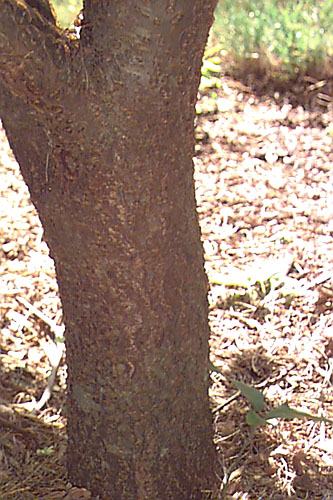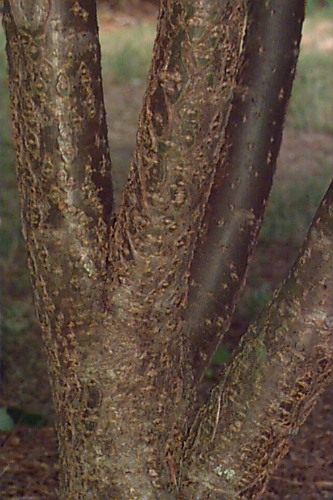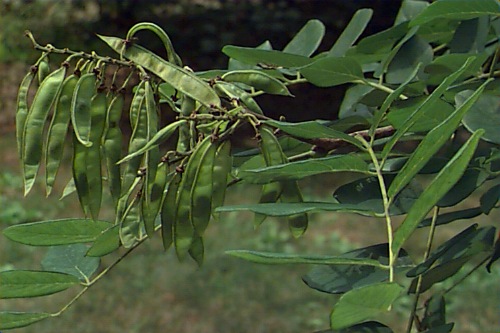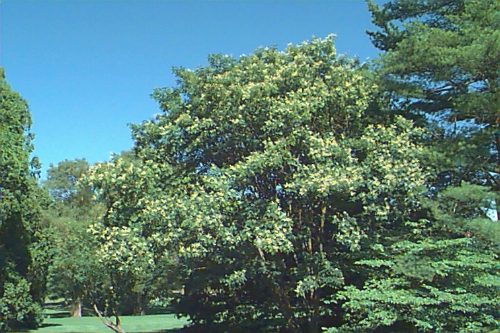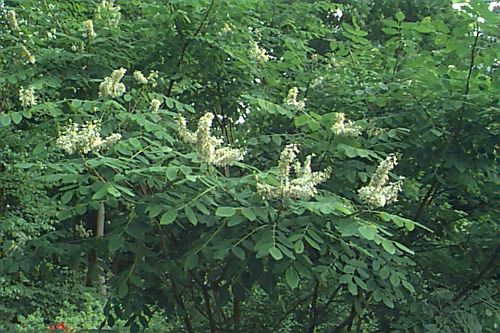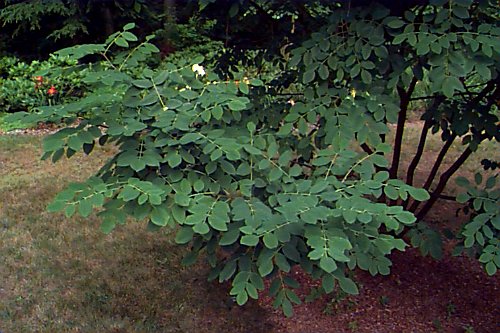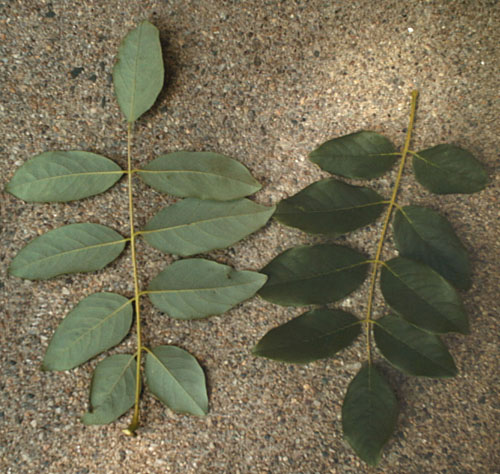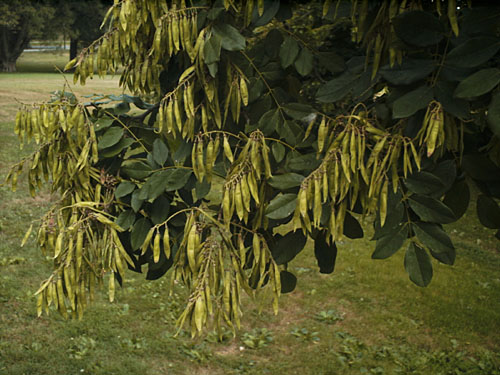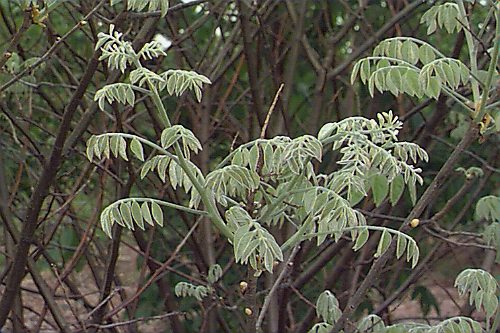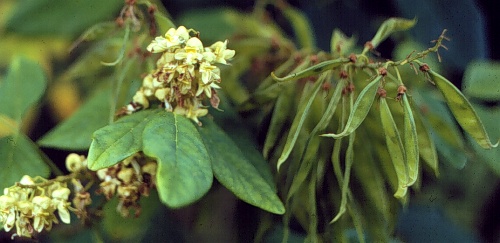Maackia amurensis
Amur Maackia
Leguminosae
ExpandHabitat
- native to Manchuria
- hardy to zone 4
Habit and Form
- a deciduous small tree
- grows 20' to 30' tall
- at least as wide as tall
- rounded shape
- foliage mostly toward the outer part of the canopy
- short main trunk that splits into many main branches 2' to 3' from the ground
- neat clean attractive form
Summer Foliage
- alternate, pinnately compound leaves
- leaves 8" to 12" long
- 7 to 11 leaflets per leaf
- leaflets are 1.5" to 3.5" long and elliptic to ovate
- color is dark gray-green or olive-green
- hairs on emerging shoots and leaves makes them appear silvery
- high quality and attractive
Autumn Foliage
- no color develops
- leaves drop green or brown
Flowers
- small dull, white pea-like flowers
- in upright clusters
- clusters are 4" to 6" long
- bloom time is June and July
- flowers are not overwhelmingly showy but are nice for their summer appearance
- like most legume trees, heavy blooming does not occur each year
Fruit
- a 2" to 3" long flat pod
- changes from green to brown
Bark
- exfoliates in curls
- color is an interesting amber or copper color with greenish undertones
- bark that isn't exfoliating is shiny and looks as if it were varnished
- an ornamental asset
Culture
- full sun is best
- seems to prefer loose, well-drained soils
- soil pH is not an important factor
- easily transplanted
- fixes nitrogen
Landscape Use
- for nice foliage and form
- for attractive bark
- for summer flowers
- excellent small tree for residences
- for difficult sites
Liabilities
- no serious problems
- have seen Japanese beetles feeding on foliage
- may not bloom well every year
- hard to locate to purchase
ID Features
- dull white pea-like flowers in summer
- curly exfoliating, yet shiny amber bark
- odd-pinnately compound leaves
- short main trunk
- broad rounded and refined outline
Propagation
- by seed
Cultivars/Varieties
- none
